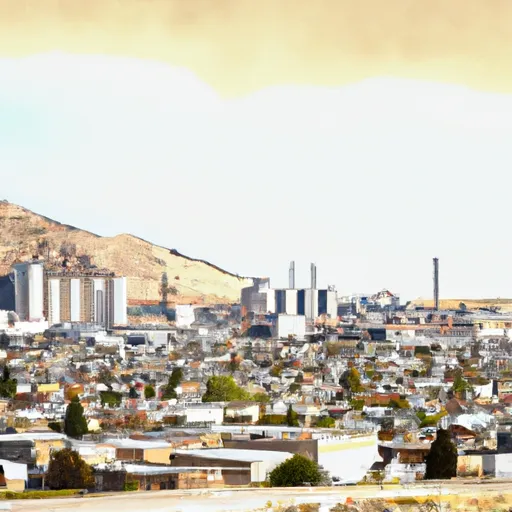-
 Snoflo Premium
Snoflo Premium
Get unlimited access to all our content
With no Ad interruptions! - Start Your Free Trial Login with existing account
Schurz
Eden Index
Climate
8.6
•
Recreation
•
Community
•
Safeguard
3.4/10

Schurz, Nevada is a small town located in Mineral County in the western part of the state. The climate in Schurz is arid, with hot summers and mild winters. Summers can be quite hot, with temperatures often exceeding 100°F, while winters are generally mild, with temperatures rarely dropping below freezing. The town receives minimal rainfall throughout the year.
Hydrology constituents in Schurz are primarily dependent on the Walker River, which flows through the town. The river provides a vital water source for the community and supports various aquatic ecosystems. The river also offers recreational opportunities such as fishing and boating.
Outdoor recreation opportunities in Schurz are abundant. The surrounding area is known for its scenic beauty, with nearby mountains and desert landscapes. Outdoor enthusiasts can enjoy activities such as hiking, camping, and birdwatching in the nearby Walker River State Recreation Area. The area also offers opportunities for off-roading, wildlife viewing, and photography. In addition, the region is renowned for its starry night skies, attracting stargazers and astronomy enthusiasts. Overall, Schurz provides a unique setting for outdoor adventure and appreciation of nature.
What is the Eden Index?
The Snoflo Eden Index serves as a comprehensive rating system for regions, evaluating their desirability through a holistic assessment of climate health, outdoor recreation opportunities, and natural disaster risk, acknowledging the profound impact of these factors on livability and well-being.
Climate Health Indicator (CHI): 8.6
Schurz receives approximately
130mm of rain per year,
with humidity levels near 60%
and air temperatures averaging around
12°C.
Schurz has a plant hardyness factor of
7, meaning
plants and agriculture in this region tend to thrive during the non-winter months.
By considering the ideal temperature range, reliable water supplies, clean air, and stable seasonal rain or snowpacks, the Climate Health Indicator (CHI) underscores the significance of a healthy climate as the foundation for quality living.
A healthy climate is paramount for ensuring a high quality of life and livability in a region, fostering both physical well-being and environmental harmony. This can be characterized by ideal temperatures, reliable access to water supplies, clean air, and consistent seasonal rain or snowpacks.
Weather Forecast
Streamflow Conditions
Walker
Area Rivers
Walker
Snowpack Depths
Walker
Reservoir Storage Capacity
Walker
Groundwater Levels
Recreational Opportunity Index (ROI):
The Recreational Opportunity Index (ROI) recognizes the value of outdoor recreational options, such as parks, hiking trails, camping sites, and fishing spots, while acknowledging that climate plays a pivotal role in ensuring the comfort and consistency of these experiences.
Access to outdoor recreational opportunities, encompassing activities such as parks, hiking, camping, and fishing, is crucial for overall well-being, and the climate plays a pivotal role in enabling and enhancing these experiences, ensuring that individuals can engage in nature-based activities comfortably and consistently.
Camping Areas
| Campground | Campsites | Reservations | Toilets | Showers | Elevation |
|---|---|---|---|---|---|
| Walker Lake | 40 | 4,081 ft | |||
| Sportsmans Beach | 40 | 4,083 ft | |||
| Tamarack | None | 4,029 ft |
Nearby Ski Areas
Catastrophe Safeguard Index (CSI):
The Catastrophe Safeguard Index (CSI) recognizes that natural disaster risk, encompassing floods, fires, hurricanes, and tornadoes, can drastically affect safety and the overall appeal of an area.
The level of natural disaster risk in a region significantly affects safety and the overall livability, with climate change amplifying these risks by potentially increasing the frequency and intensity of events like floods, fires, hurricanes, and tornadoes, thereby posing substantial challenges to community resilience and well-being.
Community Resilience Indicator (CRI):
The Community Resilience Indicator (CRI) recognizes that education, healthcare, and socioeconomics are crucial to the well-being of a region. The CRI acknowledges the profound impact of these elements on residents' overall quality of life. By evaluating educational resources, healthcare accessibility, and economic inclusivity, the index captures the essential aspects that contribute to a thriving community, fostering resident satisfaction, equity, and social cohesion.

